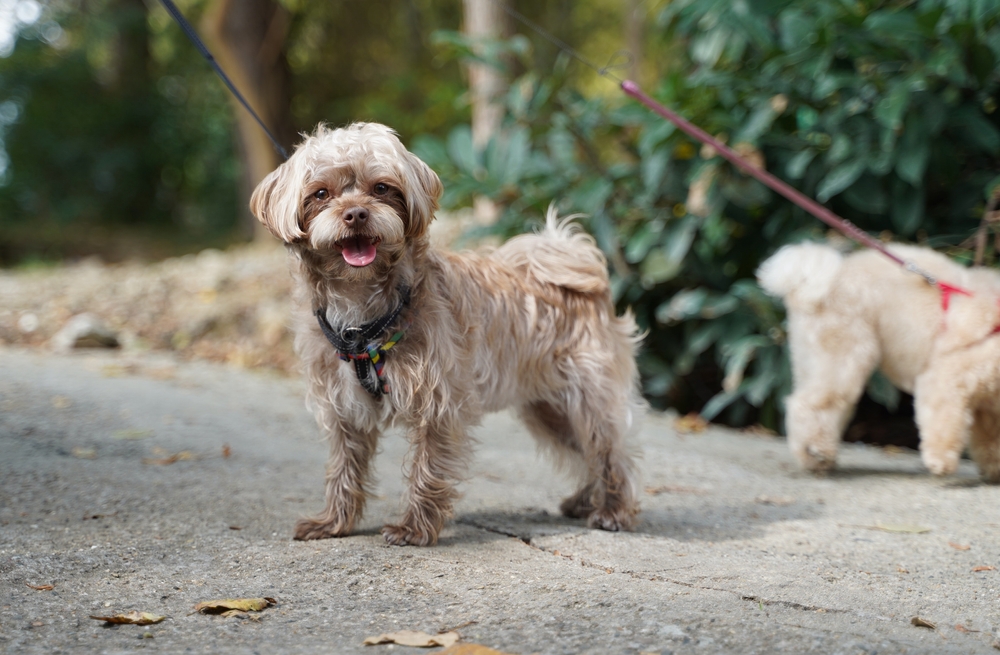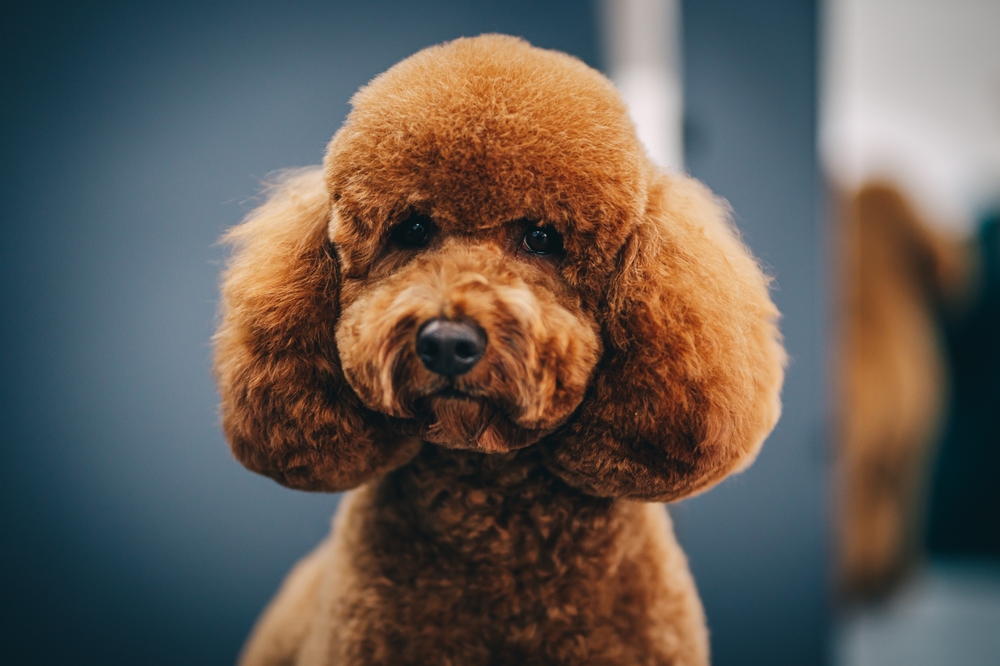In this article
View 3 More +The Maltipoo is a relatively new breed among the many designer dog breeds that have appeared on the scene in recent years. Crossed between the diminutive Maltese and a Toy or Miniature Poodle, the Maltipoo typically has a round head, floppy ears and a small stature, resulting in a puppy-like appearance that lasts throughout adulthood. The Maltipoo’s lifespan is usually from 10 to 13 years.
What is the Average Maltipoo Lifespan?
The Maltipoo has an average lifespan of 10 to 13 years. Smaller breed dogs typically live between 10 and 15 years of age. If you’re looking for a companion that will live for many years, a small breed like the Maltipoo is a good bet for many years of companionship.


Why Do Some Maltipoos Live Longer Than Others? The 8 Factors
Several factors can contribute to longevity in a Maltipoo. Genetics often play a factor; for example, if the parent breeds were both long-lived, your Maltipoo will likely live a similar number of years.
General overall health can also be determined by the parent breeds, so if they were healthy, the offspring likely will live as long. Here are some additional factors that can determine how long a Maltipoo can live:
1. Nutrition
Nutrition is a key factor in determining the lifespan of a Maltipoo. A good pet food includes the right amount of protein, fats, vitamins, carbohydrates, and minerals. Nutritionally balanced pet food will give your pet strong muscles and bones, healthy skin and fur, and energy to spare. Do not overfeed your Maltipoo, as they can become obese, which can result in diabetes, arthritis, bone issues, and organ failure. Avoid overfeeding your pet so they can live a long life. It is a good idea to consult your Maltipoo’s feeding schedule and dosage with a veterinarian.
If you need to speak with a vet but can't get to one, head over to PangoVet. It's our online service where you can talk to a vet online and get the personalized advice you need for your pet — all at an affordable price!

2. Environment and Conditions
Maltipoos that live in a well-maintained home environment will live longer than pets that are mistreated. Chronic stress can be caused by negative punishment training sessions, harsh living conditions, and unpredictable social surroundings, which can lead to behavioral issues, as well as issues with the endocrine, gastrointestinal, and cardiovascular systems.
3. Enclosure Size/Living Quarters/Housing
Enclosures for Maltipoos should be size-appropriate and be kept clean and well-maintained. Maltipoos should be kept indoors for sleeping, eating, and play sessions but will enjoy outdoor walks or some time in the yard to run around. Due to their small stature, Maltipoos should be kept under supervision when they are outside to avoid any issues with larger animals, such as coyotes.

4. Size
The small size of the Maltipoo means the breed will live an average of 10 to 13 years, maybe longer. Potential pet owners who are looking for a dog that will live for many years will find the perfect companion in the small Maltipoo.
5. Sex
Sex doesn’t seem to be much of a determining factor in how long a Maltipoo lives. A recent study showed that sex only makes a small difference in determining longevity. Neutering seems to make a bigger impact on longevity in dogs; there was a small longevity male advantage in intact dogs, but in neutered dogs, females survived longer.

6. Genes
Genes can help determine longevity if we look at the health of the breed’s parents. Some other health factors are determined by the genes of the parent breeds. Toy and Miniature Poodles may have orthopedic problems, such as luxating patellas and Legg-Calve-Perthes, that could appear in offspring. Malteses may also have luxating patellas, as well as heart or liver issues.
While there is the potential for these issues to be lurking in a Maltipoo’s genetic history, it’s likely the offspring would live a long life if the parents lived a long, healthy life.
7. Breeding History
For pet owners looking to bring home their own Maltipoo, choosing a reputable breeder can make a difference in determining how long your Maltipoo may live. Reputable breeders work to screen out any serious genetic anomalies, as well as any behavior or other health issues that can affect longevity.
If you’ve brought home a Maltipoo and are looking into breeding them, make sure to work with a reputable breeder to make sure your pet is properly taken care of during the breeding process. Females may run into a variety of issues during the breeding process, including womb infections or problems giving birth, which can shorten the lifespan of your Maltipoo. Consider neutering to prevent unwanted pregnancies to give your pet a long life.

8. Healthcare
Annual visits to a veterinarian will help keep your Maltipoo healthy. Make sure to bring any concerns you may have about your pet’s health to a vet’s attention. No issue is too small to address with a vet, as many times, more serious health issues can be headed off by addressing the issue early.

The 6 Maltipoo Life Stages
Maltipoos go through the following life stages as they age:
- Puppy – Maltipoos are considered puppies from birth until they reach sexual maturity, usually 6–9 months of age. They are learning quickly, becoming house-trained, and excelling at dog training classes.
- Young Adult – Your Maltipoo is considered a young adult from around 6 months to 1 year. These months are similar to being a teenager as they’re still growing.
- Adult – A dog is considered an adult when it stops growing. The age range for an adult Maltipoo is typically 1–7 years.
- Mature Adult – Dogs typically hit middle age around 7 years of age, but due to the longevity of the Maltipoo breed, your pet may not hit middle age for a couple of more years.
- Senior – Dogs hit this life stage when they’re in the last quarter of their expected lifespan. Since the Maltipoo has an average lifespan of 10–13 years, a Maltipoo can hit this age anywhere from eight years of age through the end of life.
- Geriatric – If a Maltipoo lives past the average expected timeframe of 10–13 years, they’re considered geriatric for the rest of their life.

How to Tell Your Maltipoo’s Age
Determining your Maltipoo’s age can be difficult to determine if you didn’t get your dog as a puppy from a breeder.
Here are some ways that you can determine older age in Maltipoos:
- Graying fur is a sign that your pup may be older than you think.
- Broken teeth, gingivitis, and excessive tartar are also signs of an older Maltipoo. If you see these issues brewing, make a vet appointment for teeth cleaning, as tooth issues can cause a variety of health issues.
- Cataracts are a light, cloudy film over the eyes that show a Maltipoo is aging.
- Older Maltipoos may have less muscle definition, and fat may be redistributed to other areas of the body.
- Take your Maltipoo to the vet to determine age. Vets are often better at determining age than the average pet owner, as they know a variety of age indicators based on breed.


Conclusion
To sum up, the Maltipoo’s life expectancy is usually from 10 to 13 years. They are a healthy, small breed dogs that can give pet owners years of love and companionship if they are properly cared for during their lives. Regular vet checkups, a healthy diet, plenty of exercise, and a clean and loving home environment are all important to ensuring the longevity of your Maltipoo. Show your pet love by taking proper care of them and you’ll have a companion for years to come.
See also:
- Maltipoo vs Yorkiepoo: The Differences (With Pictures)
- Male vs Female Maltipoo: Which One is Right for Me?
Featured Image Credit: Anton Vierietin, Shutterstock


















